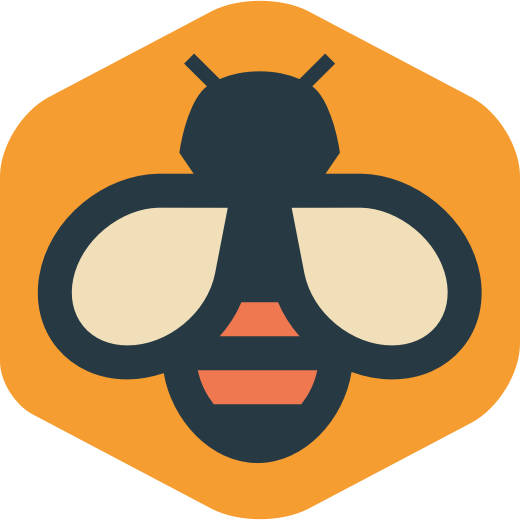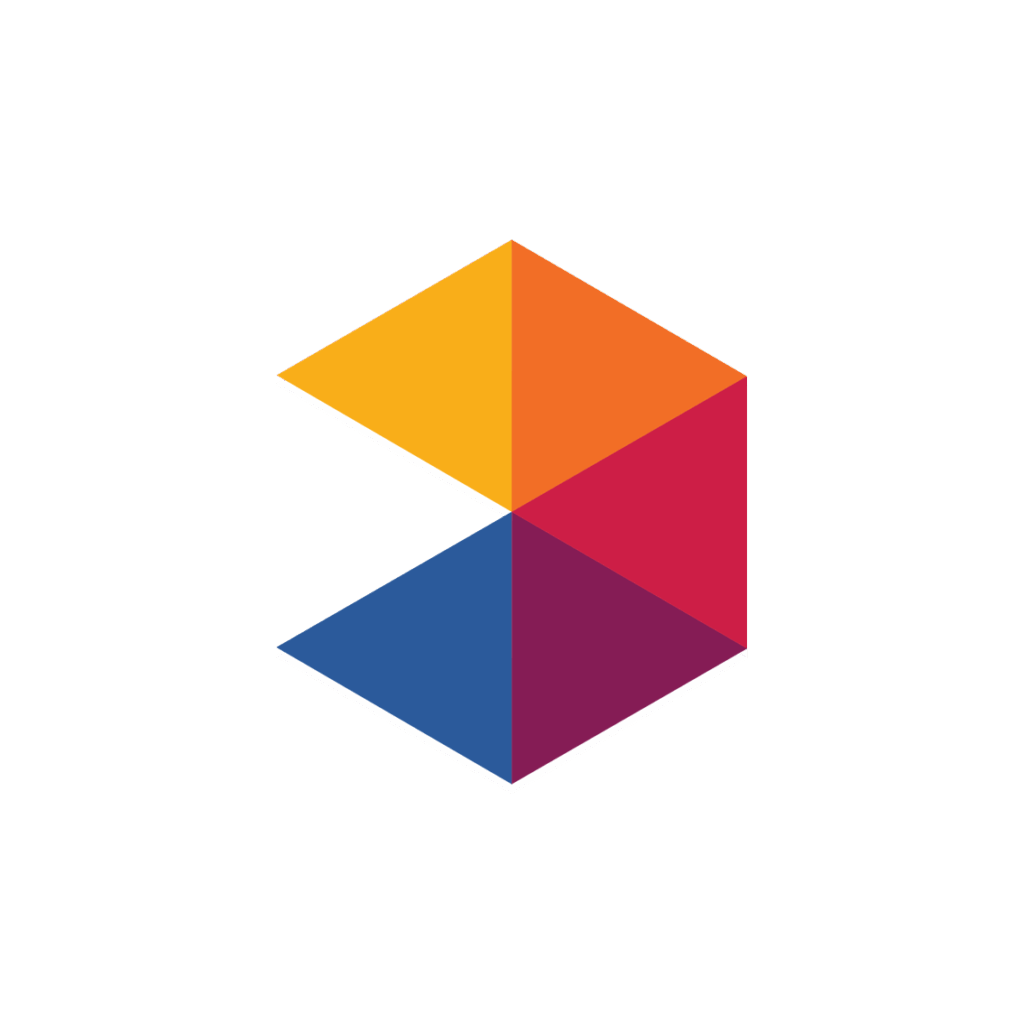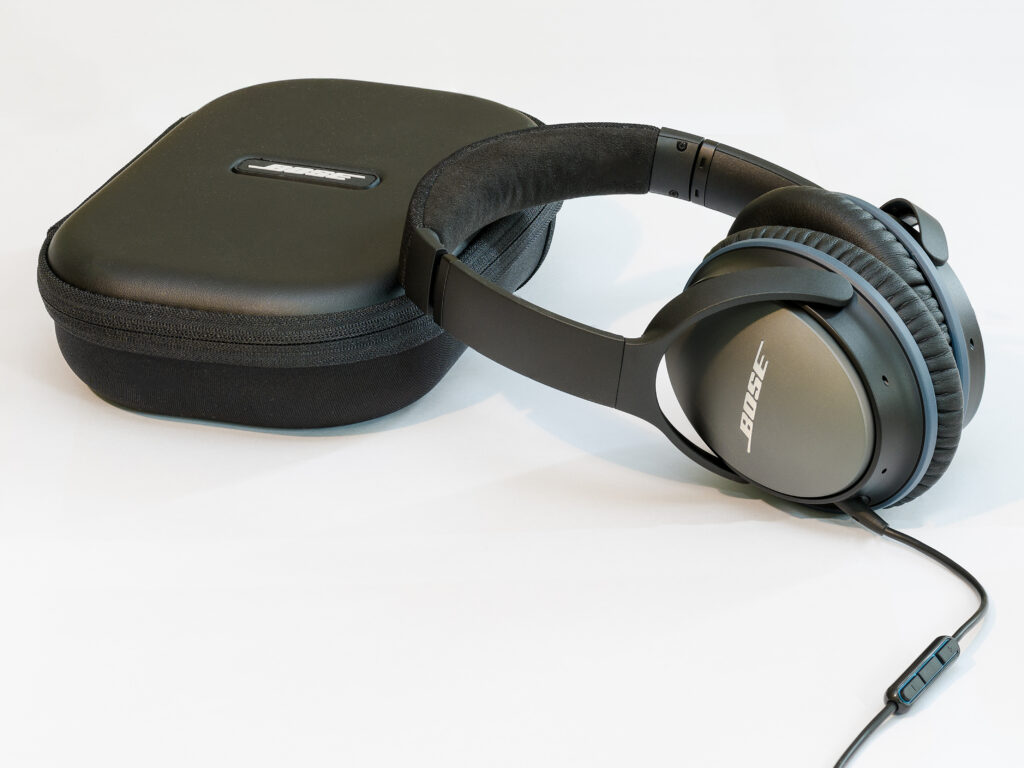
Learning a new language is a goal that many of us set, often with the best intentions as a New Year’s resolution. However, the path to linguistic mastery can sometimes feel daunting, with common hurdles like limited time or tight budgets frequently pushing these ambitious language goals to the back burner. It’s a common story, but it doesn’t have to be yours.
But here’s some truly fantastic news: it’s absolutely not too late to rekindle that resolution and embark on an exciting linguistic adventure. Thanks to the expansive and ever-evolving world of free online resources, learning a new language has become more accessible and affordable than ever before, allowing you to dive into a new tongue without having to spend a fortune.
In this in-depth guide, we’re going to explore a magnificent array of free language learning websites and applications that cater to a wide spectrum of languages, including popular choices like Spanish, French, German, Italian, Japanese, and Korean, among many others. Whether you’re a complete beginner eager to grasp the basics or an experienced learner looking to refine your existing skills, these entirely free resources are ready to support and enhance your language acquisition journey. Get ready to discover your next favorite learning tool!

1. **Duolingo: The Gamified Language Learning Champion**
Duolingo stands out as arguably the best overall free language learning app available today, captivating users with its highly motivating and addictive design. Since its debut more than 14 years ago, Duolingo has continuously evolved, expanding its language offerings, enriching its courses, enhancing accuracy, and refining its user interface. It’s often recommended that every language student, regardless of their current level, should utilize Duolingo to some extent to bolster their vocabulary and grammar.
What makes Duolingo so effective is its masterful gamification of the learning process. The app excels at knowing precisely when to offer bonus points, award special quizzes, or trigger engaging streaks, encouraging you to keep using the app just a little longer. This strategy is incredibly successful at keeping users engaged, which directly translates into more consistent learning, even if the approach is relatively easy, making you constantly feel good about your progress.
Duolingo’s curriculum is structured with organized, progressive lessons that effectively teach sentence structure from the very beginning. Vocabulary sets are thoughtfully grouped thematically, guiding you along a clear, predetermined path. For those who are more advanced, there’s also the convenient option to test out of lessons that you find too easy, allowing you to bypass content you already know.
While Duolingo is exceptional for getting started and maintaining engagement, it does have a few limitations. The quantity of material can vary significantly by language, and grammar lessons could be more prominently featured within the curriculum. Furthermore, while it’s excellent for beginners and for practicing vocabulary, it doesn’t typically take learners beyond an intermediate level in most languages and sometimes lacks practical conversational speaking practice. Some languages might also feature robotic voices for audio, and the lack of explicit instruction on grammar nuances can be a hurdle for some learners.
Despite these minor criticisms, the free version of Duolingo remains an unparalleled resource. It’s perfect for everyone, but particularly beneficial if you need that extra nudge of motivation to consistently stick with your studies. The benefits of a paid account are quickly evident, such as unlimited hearts and bonus content, but even without it, the free version delivers an outstanding and engaging learning experience.
Read more about: Unlock Your Linguistic Potential: The 10 Best Free Online Tools for Learning 15+ Languages

2. **Busuu: The Structured Learning Path with Community Support**
Busuu offers a distinct approach to language learning, providing both free and paid options and teaching 13 languages, in addition to English. It carves out its niche by providing well-structured lessons that align with the Common European Framework of Reference for Languages (CEFR). This adherence to CEFR standards is particularly valuable, as it allows learners to accurately gauge their proficiency level, which can be immensely helpful if you decide to complement your studies with other apps, a tutor, or formal classes.
One of Busuu’s notable strengths lies in its effectiveness at teaching languages that utilize non-Roman scripts, such as Japanese and Korean, a feature that places it on par with Duolingo in this specific area. The biggest difference between Busuu and Duolingo is in their fundamental design: Busuu is crafted more like a traditional learning program, emphasizing dedication and focused study, while Duolingo leans heavily into a game-like experience.
Busuu is ideal for learners who can commit to sitting down, dedicating focused time to their studies, and taking notes as they progress. Its structured lessons incorporate comprehension checks to thoroughly reinforce new words and provide explanations of vocabulary, grammar, and even cultural context. The platform also stands out for its community support features, offering an option to record answers and receive valuable feedback from native speakers, which is crucial for developing speaking skills.
While the free version provides a taste of its offerings, primarily flashcard-based practice, the premium plan unlocks a wealth of features, including conversations with native speakers, quizzes, grammar exercises, and official certificates. However, the free version is limited in what it provides, and Busuu’s exercises could generally be more challenging. Additionally, the quality of language courses can vary, and there’s a possibility of receiving incorrect corrections from the community.
Overall, Busuu’s free offerings are excellent for learning the basics of a new language or as a review tool, especially if you’re looking for a more formal and structured learning environment that also incorporates community interaction. If you appreciate its format, the premium subscription is definitely worth considering for serious learners.
Read more about: Unlock Your Linguistic Potential: The 10 Best Free Online Tools for Learning 15+ Languages

3. **Quizlet: Your Go-To for Specialized Flash Cards**
Quizlet distinguishes itself as the most versatile free option available for language learning, though it isn’t a traditional language program in itself. Instead, it functions as a powerful app that allows you to study flashcards, which you can either create yourself, utilize from other users, or discover through its vast community-driven library. This flexibility means you can construct custom study sets, enabling you to laser-focus on learning the precise phrases and vocabulary that are most pertinent to your specific needs.
What makes Quizlet so user-friendly is its straightforward interface and comprehensive support for a multitude of languages. It offers a wide variety of study modes, moving beyond simple flashcard flipping to include games and different testing formats, catering to various learning preferences. Furthermore, it incorporates useful AI features that can enhance the learning experience, although many of these advanced functionalities are typically restricted to Plus members.
Quizlet is less suited for casual language learning aimed at travel and more appropriate for those studying for proficiency or specialized purposes. For instance, if you’re learning a language for work in a particular industry such as aid, law, or medical fields, the specific vocabulary and phrases required are distinct from those needed for general conversation. Quizlet excels in allowing you to curate and master this highly specialized lexicon.
However, it’s important to acknowledge Quizlet’s limitations. While it offers excellent versatility, its primary strength lies in rote memorization, meaning it doesn’t provide structured grammar explanations or conversational practice. Many of its advanced features are locked behind a Plus membership, and the available features can even differ across various countries. Despite these, for anyone needing to efficiently build a targeted vocabulary base, Quizlet remains an invaluable and highly effective free tool.

4. **Beelinguapp: Elevating Your Reading Skills Through Stories**
Beelinguapp offers a uniquely engaging method to improve language skills, setting itself apart from many other apps by focusing on reading comprehension through authentic stories. It provides a diverse range of content, including news articles, classic novels, enchanting fairy tales, and even song lyrics. This immersive approach allows learners to engage with the language in a meaningful and enjoyable context, making the acquisition of new vocabulary and sentence structures feel less like studying and more like exploring.
The core functionality of Beelinguapp lies in its side-by-side display of text. Each story appears in two languages simultaneously: one at the top of the page and the other at the bottom. Users typically configure these settings so that one language is their native tongue and the other is their target language. This dual-language presentation allows for instant comparison and understanding, bridging the gap between known and unknown linguistic elements.
Beyond just reading, Beelinguapp also incorporates an audio feature, enabling users to listen to the stories in both languages. This auditory component is crucial for developing listening comprehension, improving pronunciation, and associating written words with their spoken forms. It caters to different learning styles, ensuring that visual and auditory learners alike can benefit from its content.
Beelinguapp supports 13 languages, including popular options such as Arabic, Chinese, English, French, German, Italian, Japanese, Korean, Portuguese, Russian, and Spanish. This broad selection ensures that many learners can find content relevant to their studies. However, prospective users should be aware of its limitations: the free version offers a limited number of stories, and the app primarily focuses on reading and listening, meaning it lacks explicit grammar explanations.
Despite these constraints, Beelinguapp is an exceptional resource for anyone looking to enhance their reading skills and expand their vocabulary through contextual immersion. It transforms the act of reading into an interactive and highly effective language learning experience, making it a valuable addition to any learner’s toolkit.
Read more about: Unlock Your Linguistic Potential: The 10 Best Free Online Tools for Learning 15+ Languages

5. **Memrise: The Master of Word Association and Spaced Repetition**
Memrise is an incredibly user-friendly program built around the scientifically proven methods of spaced-repetition and authentic video content, making it an excellent choice for word association. The app leverages spaced repetition technology to help users effectively master new words and phrases, giving them significant control over their learning pace and focus. It essentially acts as a colossal directory for vocabulary across a vast array of languages, ensuring you always have new words to explore and conquer.
One of Memrise’s most compelling features is its commitment to high-quality video and audio content. By pairing new vocabulary with videos of native speakers pronouncing words and phrases in real-world contexts, Memrise significantly boosts authenticity. This approach helps learners to not only understand the meaning of words but also to grasp their correct pronunciation and natural usage, an invaluable asset for true language acquisition.
Memrise offers a free version that allows extensive learning and review of vocabulary. This accessibility means you can dive into its core features without any initial investment. The platform supports 22 languages, including widely spoken ones like Spanish, French, and German, as well as some more unique options such as Yoruba and Icelandic. This wide selection caters to a diverse range of linguistic interests, from common European languages to those less frequently taught.
However, it’s worth noting that while Memrise excels at vocabulary building and uses methods backed by solid science, it typically teaches words and phrases in isolation rather than in broader conversational contexts. Consequently, grammar explanations are limited, which might require learners to supplement their studies with other resources for a comprehensive understanding of language structure. Despite this, for anyone seeking to efficiently build and retain a robust vocabulary through engaging and scientifically-backed methods, Memrise is an indispensable free tool.
Read more about: Unlock Your Linguistic Potential: The 10 Best Free Online Tools for Learning 15+ Languages

6. **50Languages: Your Ideal Starting Point for Beginners**
If you’re a complete beginner eager to kickstart your language learning adventure, 50Languages is a resource you absolutely shouldn’t overlook. This app is specifically designed to teach basic vocabulary and offers an impressive array of free resources tailored for those just embarking on their linguistic journey. It provides a solid foundation, ensuring that new learners can quickly grasp essential words and phrases without feeling overwhelmed.
One of 50Languages’ most striking advantages is the sheer variety of languages it offers—over 50, to be exact. This extensive selection includes many popular options like Arabic, Chinese, English, French, German, Italian, Japanese, Korean, Portuguese, Russian, and Spanish. This wide coverage ensures that most aspiring learners will find their target language available, making it a highly versatile tool for introductory learning.
Beyond just vocabulary lists, the app provides a wealth of high-quality content that includes free lessons, tests, and engaging games. These interactive elements are carefully crafted to help users learn fundamental vocabulary and effectively reinforce what they’ve learned, transforming rote memorization into a more dynamic process. The platform also gives users the freedom to choose which language skills they want to focus on, allowing for a personalized learning path right from the start.
While the content is excellent for beginners, it’s important to note a couple of drawbacks. The interface of 50Languages isn’t always the most user-friendly, which might require a bit of patience to navigate initially. Additionally, some lessons may not be as accurately labeled or described as one might hope. Despite these minor imperfections, the abundance of free, high-quality content makes 50Languages an invaluable asset for anyone taking their very first steps in a new language. In-app purchases are also available, primarily to remove ads and unlock additional materials, but the core learning remains free.
Read more about: Unlock Your Linguistic Potential: The 10 Best Free Online Tools for Learning 15+ Languages

7. **Mondly: Pioneering Language Learning with Innovative Features**
Mondly is an app that truly tries to push language learning into the next generation, offering short bursts of learning through fun and high-tech methods. It’s designed to capture your attention and keep you engaged with a unique blend of snappy daily lessons, competitive events, and cutting-edge features like Augmented Reality (AR), Virtual Reality (VR), and interactive chatbots. This innovative approach makes for a distinct and often exciting learning experience, especially for those who thrive on modern technological engagement.
As a free user of Mondly’s app, you gain access to foundational material and ongoing content designed to help you establish a consistent learning routine. This includes a fresh daily lesson, a weekly quiz to test your retention, and even monthly challenges that can fuel your competitive spirit through leaderboards. The platform boasts support for 33 languages, from Spanish and French to Arabic and Japanese, and impressively, all languages can be set as either your target or native language, offering great flexibility.
While Mondly’s innovative features certainly draw attention and aim to make learning fun, the app does have areas for improvement. There can be a lack of differentiation between different learning levels, which might mean the instruction isn’t always perfectly tailored to your proficiency. The quality of language instruction can also be uneven across the different languages offered, and some advanced features, while impressive, can occasionally feel a bit forced or unnatural in their integration.
Furthermore, to access multiple languages and a broader range of premium content, an annual membership is typically required, which can be a limitation for those strictly seeking entirely free resources. Paid subscriptions unlock more lessons, conversations, vocabulary builders, and conjugation tables. Despite these nuances, Mondly’s free access provides an excellent opportunity to experience a fraction of its powerful learning punch and determine if its high-tech, gamified approach aligns with your learning style.
Read more about: Unlock Your Linguistic Potential: The 10 Best Free Online Tools for Learning 15+ Languages

8. **Innovative Language: The Audio-Heavy, Podcast-Style Approach**
Innovative Language takes a unique, audio-heavy approach to language learning, framing its lessons in a podcast-style format. This method is incredibly effective for learners who thrive on auditory input and prefer to absorb language through listening. It’s perfect for integrating learning into your daily commute or during other activities where screen time isn’t feasible.
The platform focuses on a communicative approach, providing dialogue-based lessons packed with practical vocabulary relevant to real-life conversations. You’ll gain insights into how native speakers actually communicate, rather than just memorizing isolated words. This practical focus helps you quickly build confidence in applying what you learn in everyday interactions.
While the program offers some free content, including new audio and video lessons weekly, the quality can vary across its 34 supported languages. It empowers you to decide your own learning pathway, offering flexibility rather than a strict step-by-step structure. This allows you to tailor your studies to your specific interests and learning pace.
Although the dashboard and lesson organization could benefit from more purposeful design, and some videos might lack engagement, Innovative Language remains a solid choice for practical, dialogue-based learning. Consider trying their free trial to experience the full library of audio and video lessons, lesson notes, and a personal word bank. It’s an excellent way to learn about practical vocabulary for real-life conversations.
Read more about: Unlock Your Linguistic Potential: The 10 Best Free Online Tools for Learning 15+ Languages

9. **Drops: Master Vocabulary with Bite-Sized Visual Learning**
Drops is a visually appealing and engaging app designed to help you master vocabulary in short, focused bursts. Its core philosophy is to prevent burnout by limiting free users to just five minutes of learning per day. This bite-sized approach makes language acquisition feel manageable and enjoyable, fitting seamlessly into even the busiest schedules.
The app excels at visual learning, effectively pairing images with words in your target language. This method helps you form direct associations with meanings, bypassing the need to translate back to English. With around 1700 words organized into 99 topics for each language, you’ll have a vast and diverse vocabulary to explore.
Drops supports an impressive 45 languages, including widely popular options like German, Chinese, and Spanish, alongside more obscure choices such as Ainu and Igbo. It even offers useful language-specific extras, such as Japanese kanji writing practice, catering to a wide array of linguistic interests. You can also skip words you’ve already learned, ensuring efficient progress.
However, its commitment to brevity means Drops primarily teaches vocabulary, with minimal audio and no conversation practice or grammar explanations. While the five-minute daily limit is a strong motivator for consistency, it might feel restrictive for those eager for longer study sessions. Despite these limitations, it’s an excellent free tool for building a robust and visually anchored vocabulary foundation.
Read more about: Unlock Your Linguistic Potential: The 10 Best Free Online Tools for Learning 15+ Languages

10. **LingQ: Immersion Through Authentic Text and Audio**
LingQ offers a unique immersion-based approach, transforming authentic materials in your target language into engaging lessons. The app allows you to dive into real-world content like news articles, stories, podcasts, and audiobooks, providing an authentic and rich learning experience. This method lets you learn languages as they are naturally spoken and written.
Its interactive interface is a standout feature, enabling you to discover and save “lingQs”—words you don’t yet know. These saved words are then added to your personal flashcard deck for review using the app’s Spaced Repetition System (SRS). This intelligent system ensures you practice difficult words at optimal intervals for maximum retention.
All audio content on LingQ comes with a full transcript, making it easy to follow along and save new vocabulary directly from spoken language. This comprehensive approach supports both reading and listening comprehension, allowing you to strengthen multiple language skills simultaneously. You can even upload your own content, tailoring your learning materials further.
While LingQ provides some excellent free beginner content, many advanced features and the full content library require a paid subscription. The user interface can be a bit challenging to navigate, and the app generally lacks explicit grammar instruction, speaking, and writing practice. Despite these points, for authentic immersion and vocabulary building, LingQ is an incredibly powerful free resource.
Read more about: Unlock Your Linguistic Potential: The 10 Best Free Online Tools for Learning 15+ Languages

11. **Tandem: The Community-Driven Language Exchange Platform**
Tandem revolutionizes language learning by connecting you directly with native speakers for genuine language exchange. This platform functions much like a social media network for language learners, making it incredibly easy to find partners who share your interests and goals. It’s an ideal way to practice speaking and listening in real-time, bridging the gap between theoretical knowledge and practical application.
With support for over 300 languages, including many obscure options, Tandem ensures that virtually any language learner can find a partner. You can communicate through various methods, including video calls, text messages, voice messages, and even picture exchange. This flexibility allows you to choose the interaction style that best suits your comfort level and learning objectives.
The app’s main features are available for free, allowing you to search for online partners, message them, and begin chatting immediately. It’s an invaluable tool for gaining confidence in conversation and understanding cultural nuances directly from native speakers. Tandem also incorporates features to prevent abuse, including background checks and a reporting system, fostering a safer community.
However, it’s important to note that Tandem is primarily for practicing languages, not for structured learning from scratch, making it less suitable for absolute beginners. Users might also encounter a large volume of incoming messages, which can be overwhelming, and unfortunately, some individuals may misuse the app for dating purposes. Nevertheless, for authentic conversational practice and cultural exchange, Tandem is a superb free resource.
Read more about: Unlock Your Linguistic Potential: The 10 Best Free Online Tools for Learning 15+ Languages

12. **BBC Languages: Structured Courses from a Trusted Source**
For those seeking a more structured and comprehensive approach to language learning without a price tag, BBC Languages is an exceptional resource. This platform, from a highly reputable source, offers a wealth of free resources designed to support learners across all proficiency levels. It’s particularly beneficial if you’re looking to learn Spanish and other popular European languages.
BBC Languages stands out by integrating native speakers directly into its lessons, providing an immersive experience that aids in acquiring authentic accents and pronunciation. This exposure to natural speech patterns is invaluable for developing strong listening comprehension and speaking skills. You’ll hear the language as it’s truly spoken.
The platform also supports the development of crucial writing skills through well-explained grammar lessons and various language learning methods. It doesn’t just teach you words; it helps you understand how sentences are constructed and why. This makes it an excellent alternative to traditional language learning apps that might lack comprehensive grammar explanations.
While BBC Languages doesn’t emphasize direct language exchange partners, its treasure trove of free lessons makes it a highly advantageous tool, especially for advanced learners looking to refine their skills. If you appreciate a more formal, academic-yet-accessible learning environment, this resource offers a robust foundation and continued improvement entirely for free.

13. **Open Culture: A Treasure Trove of Diverse Language Resources**
Open Culture is renowned for its vast collection of free educational content, and its dedicated section for language learning is no exception. This platform is a true goldmine for learners looking to broaden their linguistic horizons, offering an extensive array of courses and materials for countless languages. It’s a fantastic aggregation point for diverse learning assets.
The beauty of Open Culture lies in its ability to cater to learners of any native language, providing a diverse range of language courses and resources. You’ll find everything from full-length online courses and e-books to audio lessons and cultural insights. This makes it a highly versatile resource, allowing users to explore different methodologies and find what truly resonates with their learning style.
While Open Culture doesn’t function as a dedicated language app, its curated collection of high-quality, free resources serves as an invaluable supplement to any language-learning journey. Think of it as your personal library for linguistic exploration. It perfectly complements other language-learning tools, filling gaps that app-focused learning might leave.
So, whether your goal is to learn a language from scratch, deepen your understanding, or simply enhance existing skills, Open Culture’s free language learning materials are a powerful asset. Its inclusivity and comprehensive nature make it an indispensable resource for language enthusiasts aiming for a well-rounded and flexible study plan.
Read more about: Echoes of the North: Unearthing the Enduring Legacy of Viking Settlements Across Icy Horizons
So there you have it: a fantastic selection of free online tools, from gamified apps to immersive platforms and community-driven exchanges, all ready to kickstart or supercharge your language learning adventure. No matter your learning style, target language, or current proficiency, these resources offer practical, actionable steps to help you master a new tongue without breaking the bank. Dive in, experiment with a few, and find the perfect combination that empowers you to unlock new communication skills and connect with the world in a whole new way. Happy learning!




